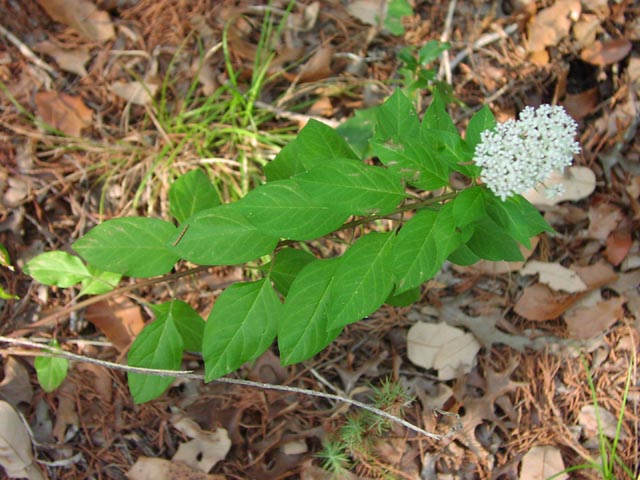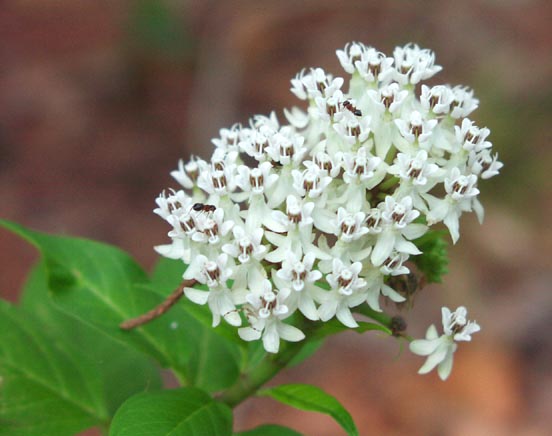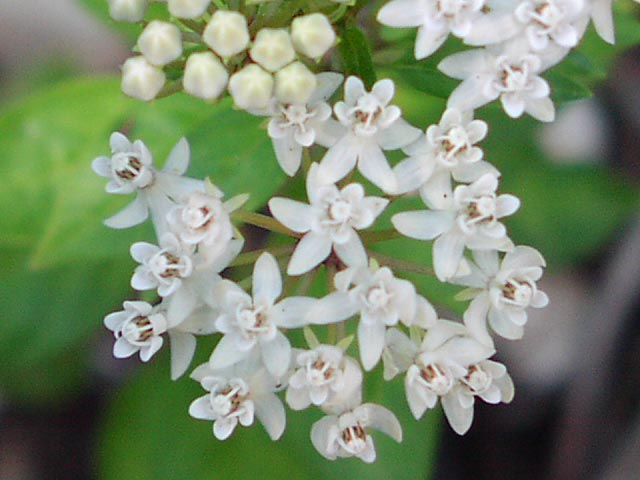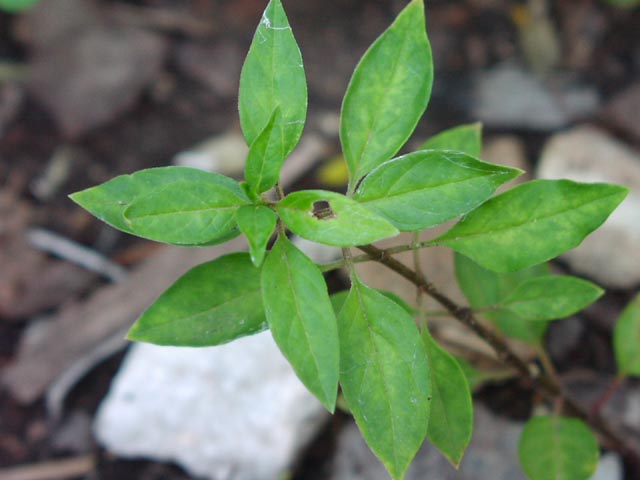| flowers closeup--milkweeds have very strange flowers! There
are five petals (that are turned downward), five sepals (hidden behind the petals in this
image), and an extra whorl of plant parts called collectively the corona. The corona
is composed of five parts, each of which is subdivided into a horn (the pointy structures
that appear to meet at the top center of each flower) that is surrounded by a hood.
In the center of the corona is a structure called a gynostegium, which represents
the fusion of parts of the stamens and pistil. On the sides of the gynostegium are
five slits--the receptive parts of the stigmas are located within these slits. Also
within these slits are indiviual packages of pollen called pollinia (singular, pollinium).
There are ten pollinia total within each flower. The pollinia are grouped
together in two's, and this structure looks a lot like two saddlebags (the pollinia)
connected by a strap (the "strap" is composed of two arms called translator
arms). When an insect pollinator comes to the flower, it gets one of its legs caught
in one of the slits of the gynostegium, and in its struggles to free itself from this
"trap", it gets one of the saddlebags attached to its leg. It then takes
this to another flower, where it may inadvertently get one of the pollinia in contact with
a receptive stigma. A very complex system, huh?! |
leaves--in Texas milkweed, the leaves occur in four ranks (four
sides) |



